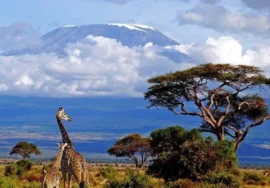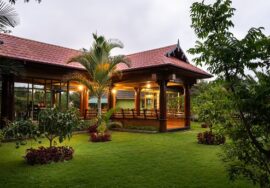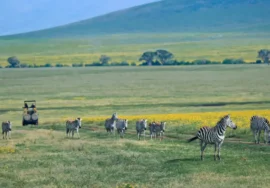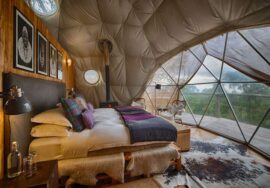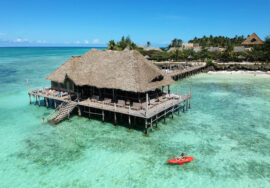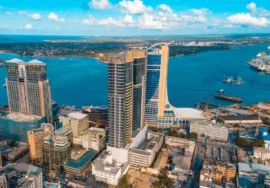
All about visiting Tanzania
All about visiting Tanzania. Vacations in Tanzania should be wonderful, and planning one can seem like a difficult task because there are so many things to think about. We’ll tell you what we think you need to know about planning a safari in Tanzania in general. This is general information that doesn’t apply to any one park or lodge. And as always, if you need to talk to an expert about anything, just give us a call.
All about going to Tanzania
This African country isn’t very big, but it has some of the world’s biggest groups of wild animals and, in some places, the most dangerous predators. Wildlife shows are always possible in places like the volcanic caldera at Ngorongoro, where a huge number of animals live in the bowl-shaped, lush environment, and on the Serengeti’s fields, which seem to go on forever. Tanzania is great because it’s easy to mix all of its beautiful parts, from a safari in the inland to a relaxing beach getaway.
There are a lot of great things about Tanzania. Serengeti National Park, Ngorongoro Crater, and Mount Kilimanjaro—three of Africa’s top five destinations—get most of the attention. But the parks in the south and west of the country are also very worth seeing. Safaris in Selous, Ruaha, Mahale, or Katavi—which are very different from each other—can be just as memorable, exciting, and private.
Its beaches are the same way. This country is also known for its colorful Swahili shoreline, which includes the more well-known islands of Zanzibar as well as less well-known parts of its mainland coast. There are both occupied and uninhabited islands in the Indian Ocean. The beaches are beautiful, with white coral sands and coconut trees that were planted by the Sultans in the past.
Places to Visit in Tanzania
The wildlife in Tanzania is amazing, but so is the country’s landscape and scenery. There is the majestic Mount Kilimanjaro, the beautiful, lush Ngorongoro Highlands, the iconic, vast grassy plains of the Serengeti punctuated by the occasional Acacia tree, the stark and dramatic, burned-red earth of Ruaha, and not to mention the stunning Indian Ocean and Zanzibar coastline, with clear blue waters lapping at the white sand shore under swaying palms. There are many beaches on Zanzibar island, so there is something for everyone. There are places to relax and unwind, as well as many water sports to choose from.
What kind of lodging can I expect on a trip to Tanzania?
Many of us think of wet sleeping bags on bumpy ground and bathrooms that don’t exist or are very basic when we hear the words “tent” and “camp.”
Safari-style tents camps, on the other hand, are in a whole different league. The “tents” are only called that because the walls are made of cloth. The insides are usually very nice and are built on a concrete or wooden base. In every other way, these are very nice little cottages. They have real beds and linens, as well as fully-plumbed bathrooms with real toilets. However, some mobile camps in the Serengeti that follow the Great Migration don’t have fixed plumbing and offer bucket showers instead.
We love tented camps so much that we actually like them better than hotels. They feel more daring and connected to nature, and there’s nothing better than sitting in bed at night on a Tanzania safari trip and hearing lions roar, hippos honk, and jackals howl through the canvas.
QUESTIONS ASKED A LOT ABOUT VISITING TANZANIA
How long should my trip last?
We usually suggest between 3 and 6 nights on safari. You need enough time to “get” the experience and see a lot of different animals, but you don’t want to get “safari-ed out!” If you want to see a bit of different wildlife and scenery, two or three nights at each of two safari camps works just as well.
What should I pack for a trip?
On safari, you should wear clothes that are casual and easy. Most of the time, it’s hot during the day and cool in the morning of evening. You should wear a few light clothes along with a warm fleece and jacket so that you can adapt to the weather as the day goes on. Bugs and the sun can both hurt you, so long-sleeved shirts can also help.
Neutral colors like khaki, green, and beige are best. Not white (it won’t stay white for long!) or camouflage, which is linked with the military and could accidentally make someone feel bad. Most camps don’t have strict dress codes, and you don’t have to change for dinner. However, most people like to get a little more fresh after an evening game drive. With your own link on our travel app, you can get a suggested packing list before you go. This will help you remember the important things.
Safari’s daily life
While the specifics change a bit from camp to camp or lodge to lodge, this is a normal day on a Tanzania safari vacation:
Wake-up call at 5:30 or 6 a.m., with coffee or tea and a muffin
A three-hour game drive in the morning, with a coffee stop along the way.
Take a break at camp for breakfast, lunch, or afternoon tea.
Some camps may have extra activities like bush walks, boat trips, and so on.
In the late afternoon, go on another three-hour game drive with a break for sunset drinks.
Arrived back at camp in time to clean up and have a drink before dinner.
After dinner and maybe a drink by the fire, it’s time for bed!
Tips or gratuities
People often ask us how much to tip “right.” It’s really up to you; there is no hard and fast rule. A safari driver or guide should get around US$15 per guest per day as a tip. At safari lodges or camps, guests should give about $10 per guest per day, and at beach hotels or resorts, guests should give about $5 per guest per day to be split among the general staff.


